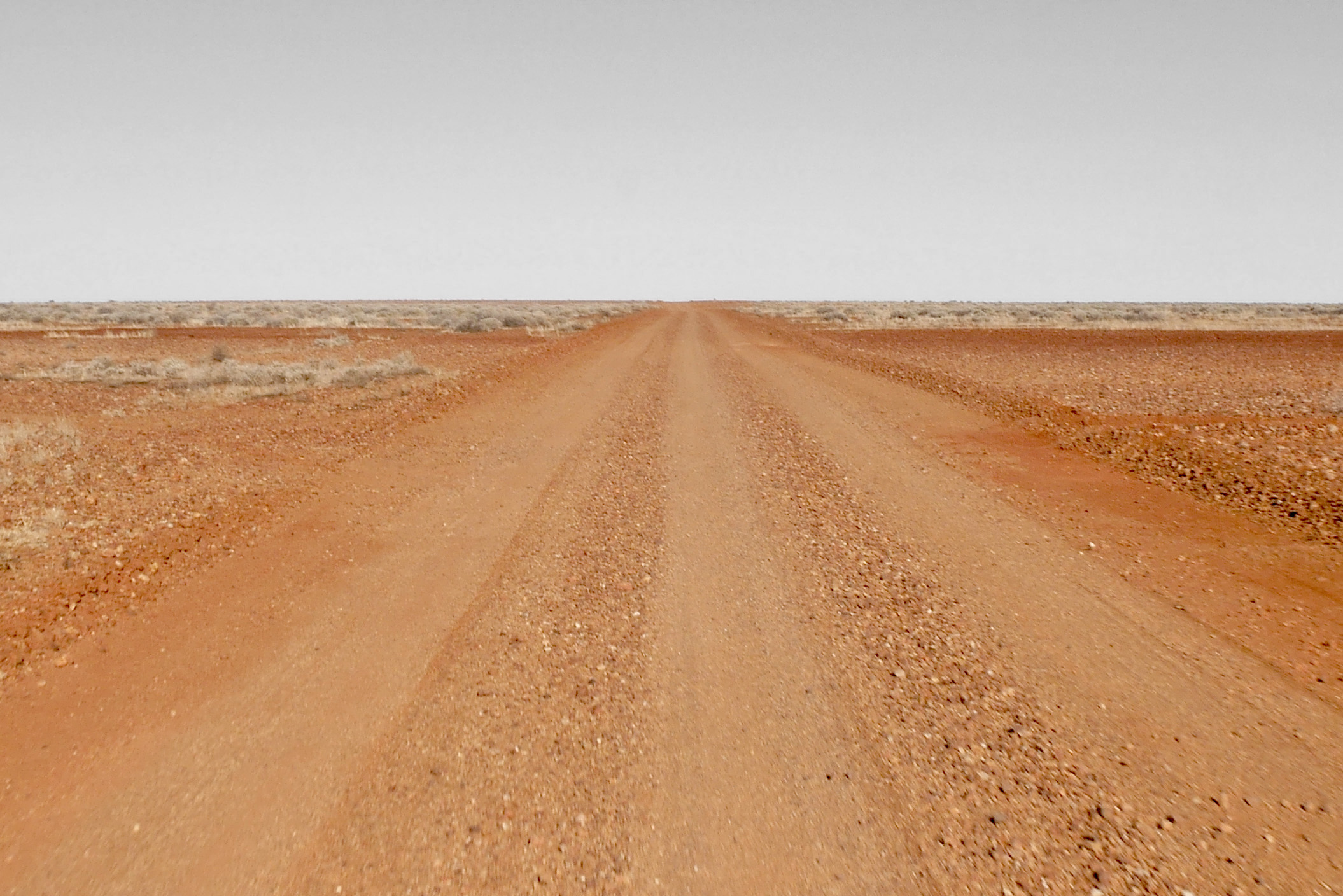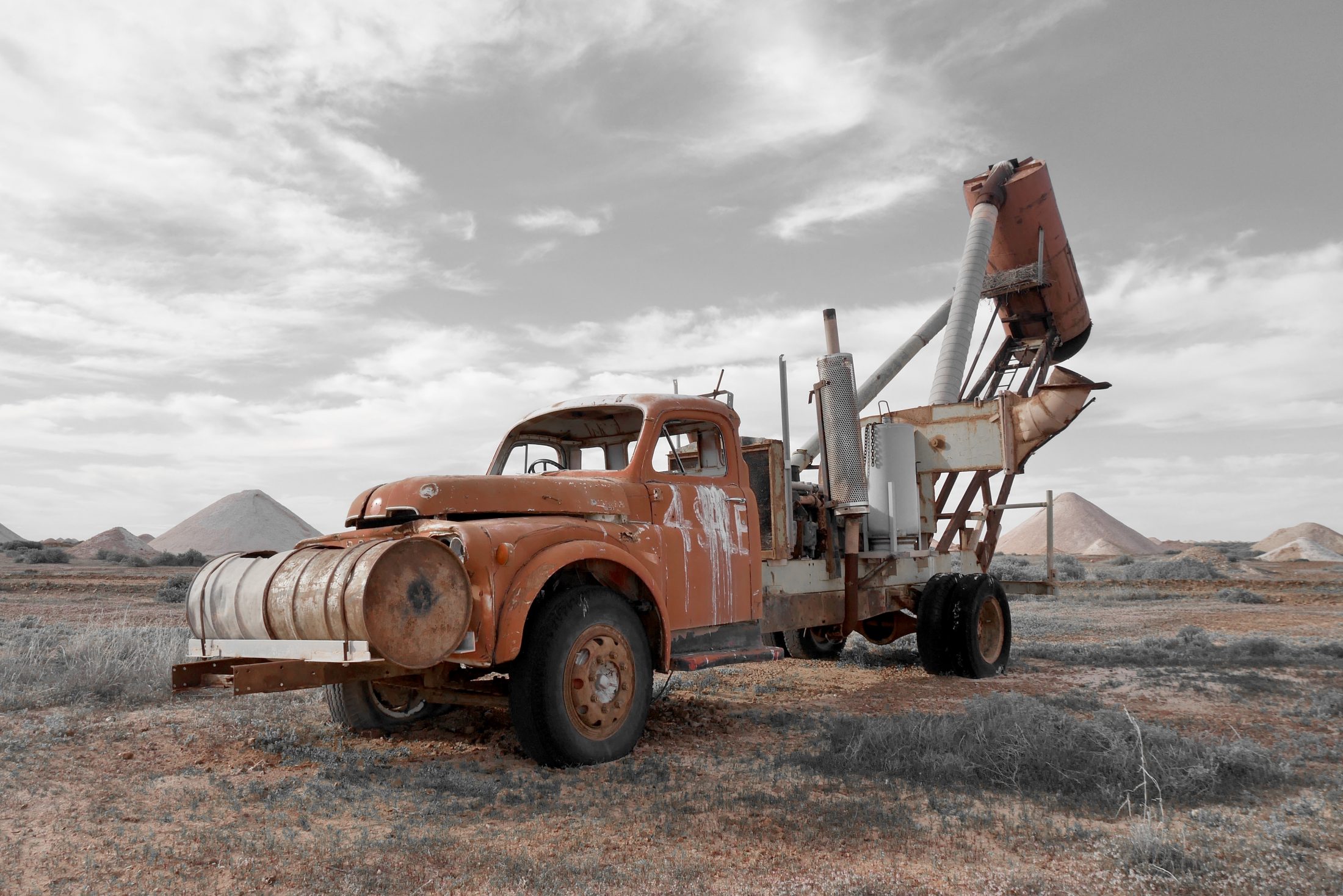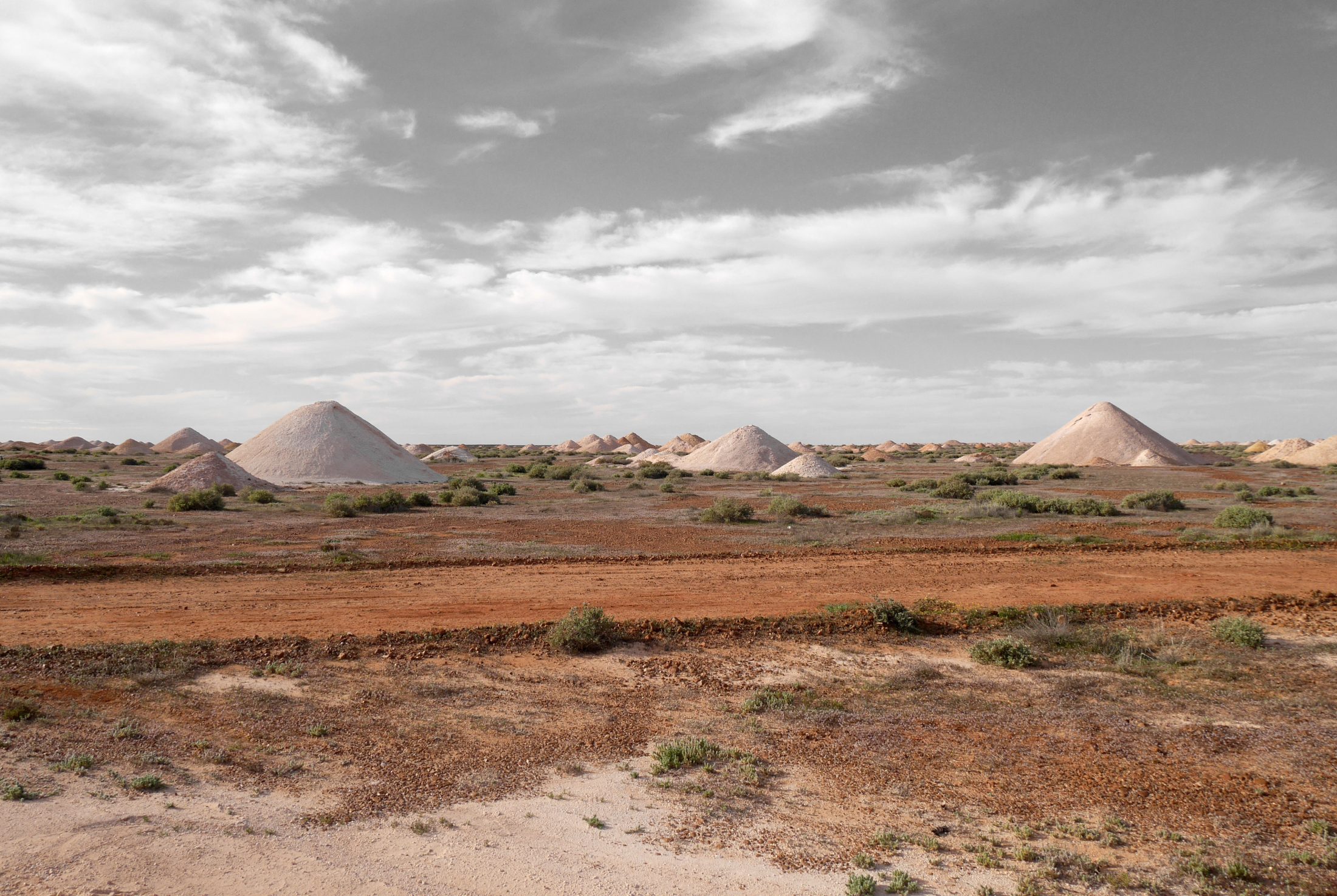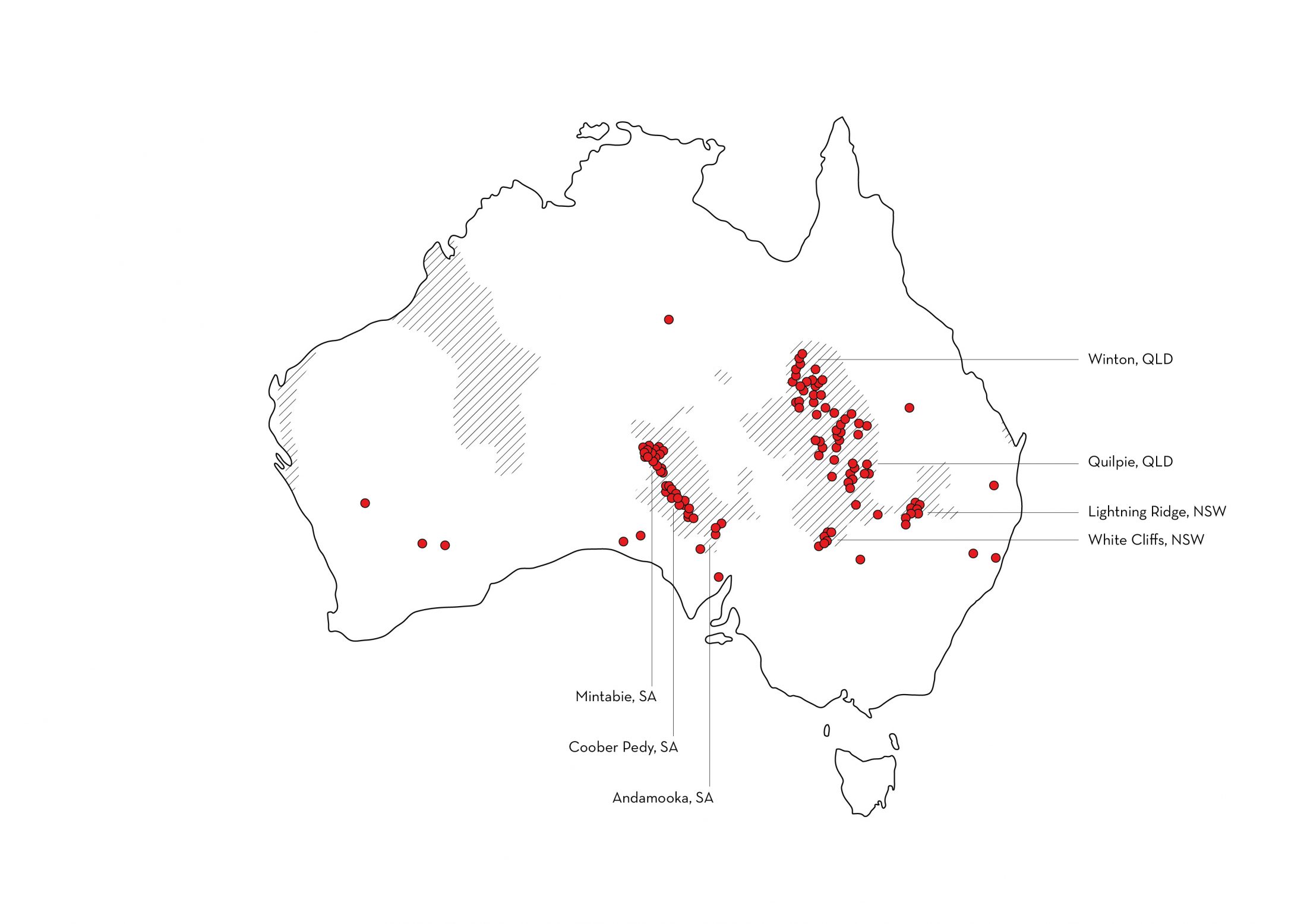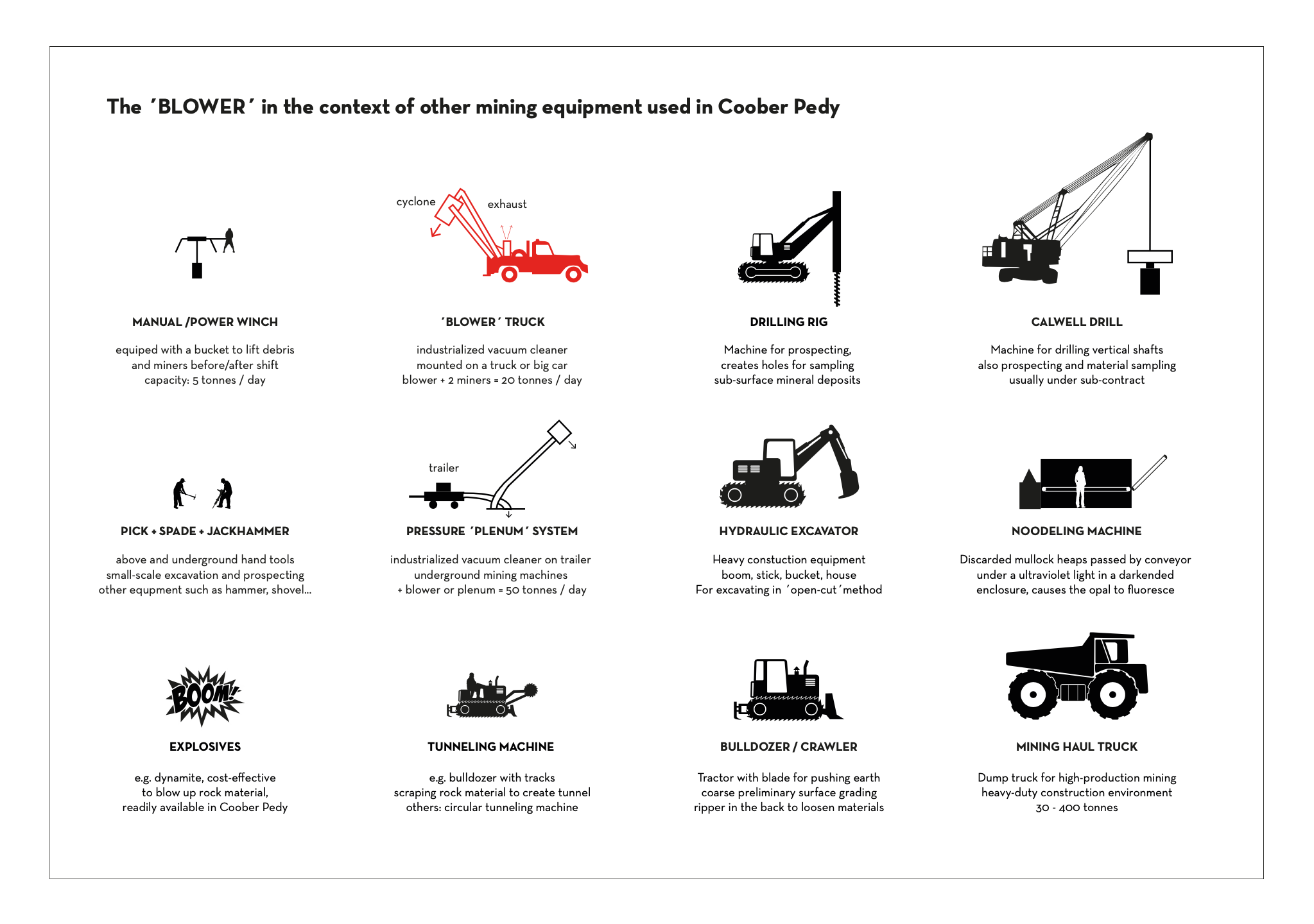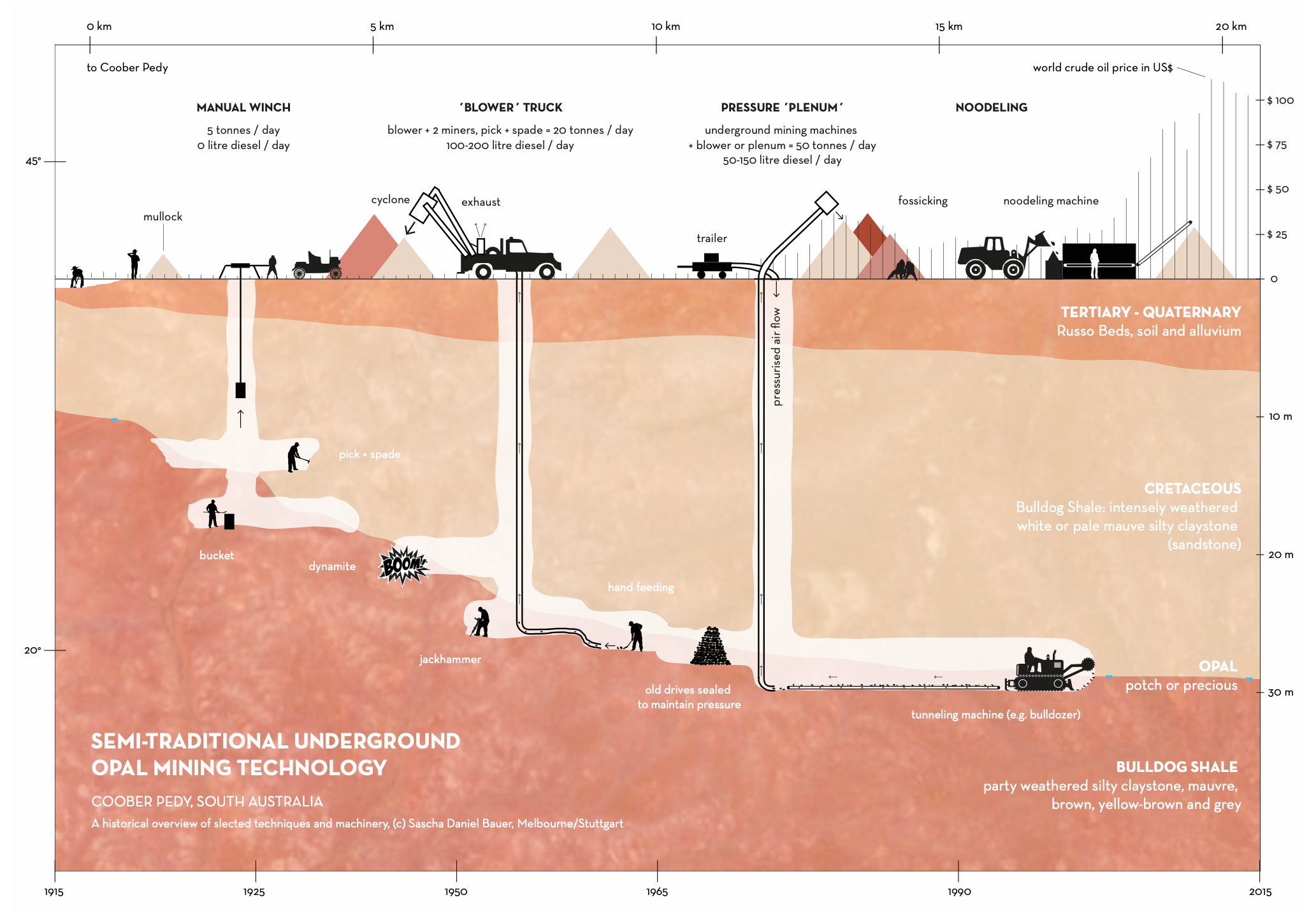To assess Coober Pedy’s cultural landscape heritage, it’s inevitably to describe and interpret its marginal environmental setting following the social and economic conditions in a place remote from urban sensibilities. This sparsely populated land, amid blistering arid plains, can best be described with a hint of human behaviour and sentimentality.
Coming close to Coober Pedy a variety of earth-like piles and riddled holes stretch along the highway. At first these piles are infrequent occurrences in a vast, mainly flat and harsh tableland. But then these heaves devour your attention after an absent-minded drive through the middle of nowhere. You instantly get distracted by these alien-like things, still able to manage your driving ability but prospecting for a further piece of information. Meanwhile, counting the piles is more and more pointless after it seems as if there are millions.
As most shafts are worked privately by a handful of men, technological advantages were evolved gradually over time and made it necessary to control former disorganised mining. This human interaction with a unique landscape results in mounds of overburden everywhere and turned this part of the Australian outback into a cultural landscape.
This short essay describes the mechanical improvement and it´s heavy impact on the landscapes, thus turning it into a unique cultural landscape. Emblematic to the technical skill and inventiveness of local miners is the particular equipment, hand-built machinery and unique mining methods which respond to the landscape by earthwork and the passing of time. Also, this ´lifestyle of hope´ and courage created forging narratives and free spirits culturally distinct from other places, enforcing its authenticity and a deep attachment to this place.
